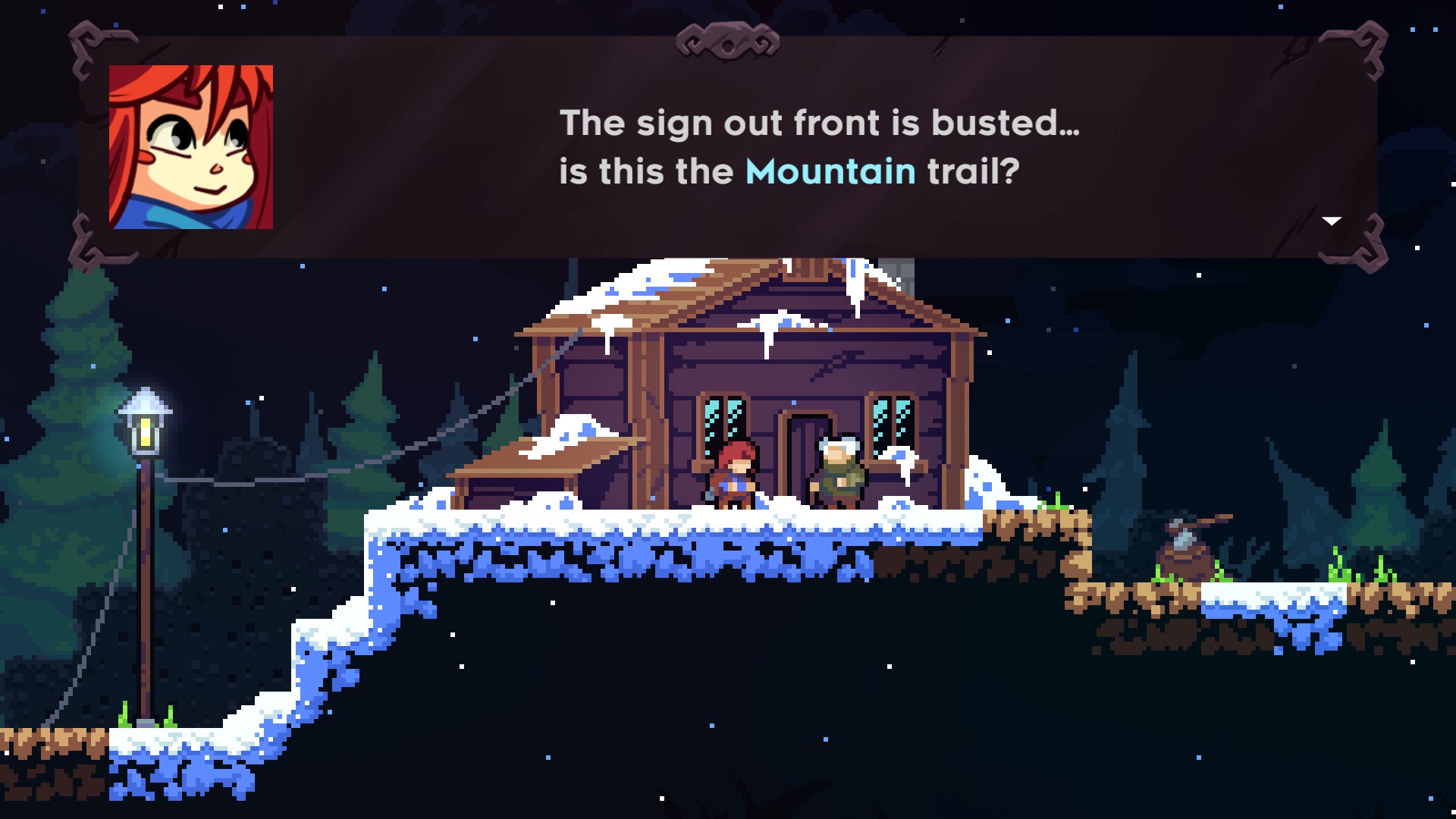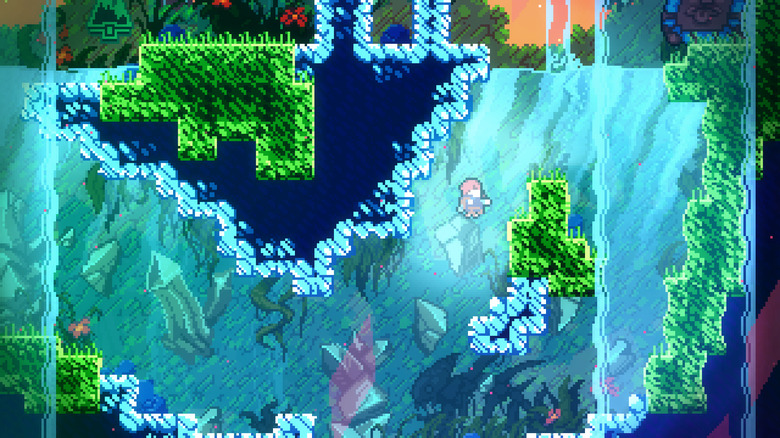'Celeste' Review: A Brutally Difficult Platformer Cushioned By A Beautifully-Told Story
Celeste is a game about climbing a mountain. Celeste is also a game about learning how to live with yourself. Celeste is also a game about rapidly dashing from one platform to the next before a one-eyed squid eats you for dinner.There are two reasons that Celeste – a challenging 2D platformer from the creator of TowerFall – stands out in a crowded genre. The first is how it melds narrative and gameplay. Celeste can be punishingly difficult at times, but the more you learn about Madeline, the main character, the more the mountain's myriad, deadly challenges begin to make sense. You will be driven not only to overcome the challenge, but to see what happens next.The second is the simplicity of the moveset. In Celeste, you can jump, dash and climb. Each of these are incredibly simple to pull off in a vacuum, but each of the games hundreds of levels will require you to make use of these moves in a dizzying variety of combinations. There are no upgrades to make your journey easier — you are responsible for getting Madeline from one level to the next by jumping, dashing and climbing from the entrance to the exit. Celeste is split up into seven chapters, each of which takes place in a unique location on Celeste mountain that introduces new mechanics for the player to master. Each location is split into dozens of rooms, which have to be conquered in order for the player to advance. If you die in a room (which you will, repeatedly), you spawn back at the entrance and have to start again. But all of the rooms in a chapter are strung together on one huge, interconnected map, so you're free to explore, look for hidden secrets and backtrack as much as you like.This is a key difference between Celeste and, say, Super Meat Boy that made all the difference in the world for me. Super Meat Boy is an endless string of disparate levels, so I'd often feel overwhelmed after completing a few levels and realizing I had dozens more to go. In Celeste, I just had seven big puzzles to solve, rather than hundreds of little ones. And then the cutscenes and dialog helped break up the action after extended difficult sequences.Then there's Celeste's sense of style, which puts it in a league all its own. The pixel art is stunning, the soundtrack perfectly fits the mood of each area that Madeline visits and the character portraits that appear during conversations are cute enough to take the edge off of what becomes a gut-wrenching story about depression and self-worth.
Celeste is split up into seven chapters, each of which takes place in a unique location on Celeste mountain that introduces new mechanics for the player to master. Each location is split into dozens of rooms, which have to be conquered in order for the player to advance. If you die in a room (which you will, repeatedly), you spawn back at the entrance and have to start again. But all of the rooms in a chapter are strung together on one huge, interconnected map, so you're free to explore, look for hidden secrets and backtrack as much as you like.This is a key difference between Celeste and, say, Super Meat Boy that made all the difference in the world for me. Super Meat Boy is an endless string of disparate levels, so I'd often feel overwhelmed after completing a few levels and realizing I had dozens more to go. In Celeste, I just had seven big puzzles to solve, rather than hundreds of little ones. And then the cutscenes and dialog helped break up the action after extended difficult sequences.Then there's Celeste's sense of style, which puts it in a league all its own. The pixel art is stunning, the soundtrack perfectly fits the mood of each area that Madeline visits and the character portraits that appear during conversations are cute enough to take the edge off of what becomes a gut-wrenching story about depression and self-worth. While I appreciated the challenge (and couldn't stop playing until I beat the game), there were a few segments that seemed to require just as much luck as they did skill that brought the fun to a temporary, but grinding, halt. Most of these segments revolved around dodging enemies and their heat-seeking attacks, but thankfully, these are relatively few and far between. In the end, they were little more than a ding on an otherwise spectacular experience.If you're a fan of impeccably designed 2D platformers and well-told stories, you can't go wrong with Celeste. Once you finish the story, there's still plenty to do, with nearly 200 strawberries to find, brutally tough B-Side levels to take on and a whole extra chapter to unlock. Celeste has set a high bar for 2D platformers this generation.
While I appreciated the challenge (and couldn't stop playing until I beat the game), there were a few segments that seemed to require just as much luck as they did skill that brought the fun to a temporary, but grinding, halt. Most of these segments revolved around dodging enemies and their heat-seeking attacks, but thankfully, these are relatively few and far between. In the end, they were little more than a ding on an otherwise spectacular experience.If you're a fan of impeccably designed 2D platformers and well-told stories, you can't go wrong with Celeste. Once you finish the story, there's still plenty to do, with nearly 200 strawberries to find, brutally tough B-Side levels to take on and a whole extra chapter to unlock. Celeste has set a high bar for 2D platformers this generation.
